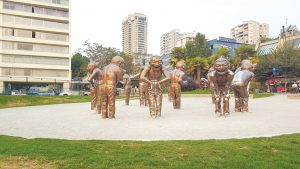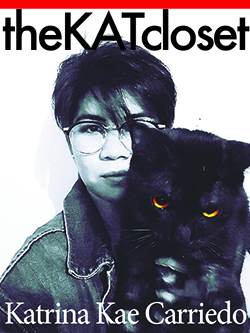You are what you feed your brain. Since your eyes are the windows/doors to your soul, the things that you see can consciously and subconsciously affect your whole being. Fortunately, more and more cities all around the world is discovering the value of investing in public art.
Other than urban design planning and architecture, public art as “Placemaking” is more than the tools used and as being a physical environment—it is a process that creates and transforms any space into an “art space” that exudes animation, fantasy, and makes it into a destination.
What can be categorized as “public art” or “art spaces”?
Official public artworks loosely refers to murals, monuments, memorials, and mimes—any government or non-government sponsored artwork usually made by professional artists that are legally placed in free and accessible venues. Ironically, because it is free, public art seems to be the most undervalued, because it is just there—you don’t have to dress up, no tickets, and you maybe are already desensitized by it everyday while going to work.
Nevertheless, psychologists and city-planners alike are looking deeper into the psychological and economic benefits of outdoor art spaces. Some have noticed that pedestrians substantially slowed down their walking pace while passing by a metal fence with simple bird designs on them—and that is because whether we know it or not, even in our most distracted moments, our minds are not totally immune to the myriad of sensory envelopment of our surroundings. One of the main reasons people are unhappy is that they fail to take notice of what is around them—this logic of living feels “hollow”.
 Art transforms a normal public space and forces people to see it and provoke appreciation. Therefore, it now becomes a place of ‘remembering’, ‘sorrow’, and ‘hope’—since it creates a venue for communities to bond and make memories together. It even becomes a place of re-balancing/self-understanding and growth—since some art spaces integrate different sets of cultures that make communities proactive in being more understanding of their differences.
Art transforms a normal public space and forces people to see it and provoke appreciation. Therefore, it now becomes a place of ‘remembering’, ‘sorrow’, and ‘hope’—since it creates a venue for communities to bond and make memories together. It even becomes a place of re-balancing/self-understanding and growth—since some art spaces integrate different sets of cultures that make communities proactive in being more understanding of their differences.
And speaking of “growth”, economically speaking, art has helped cities around the globe increase their productivity and profits exponentially due to the influx of tourists that is also correlated to job growth and availability. It creates an opportunity for the locals to showcase the uniqueness of their produce, sights and sounds—that also strengthens their cultural love and identity. It urges people to go out and live a healthier lifestyle since public art is a rupture in pedestrian life and a conversation between art and landscape. Public art is a public good because the level of strength of its cultural life is an indication of how great a city is. Arts and culture are truly a powerful and necessary tool in contributing to the community’s globalization and learning that prompt different levels of change that builds capacity and leadership, and most importantly, well being.







